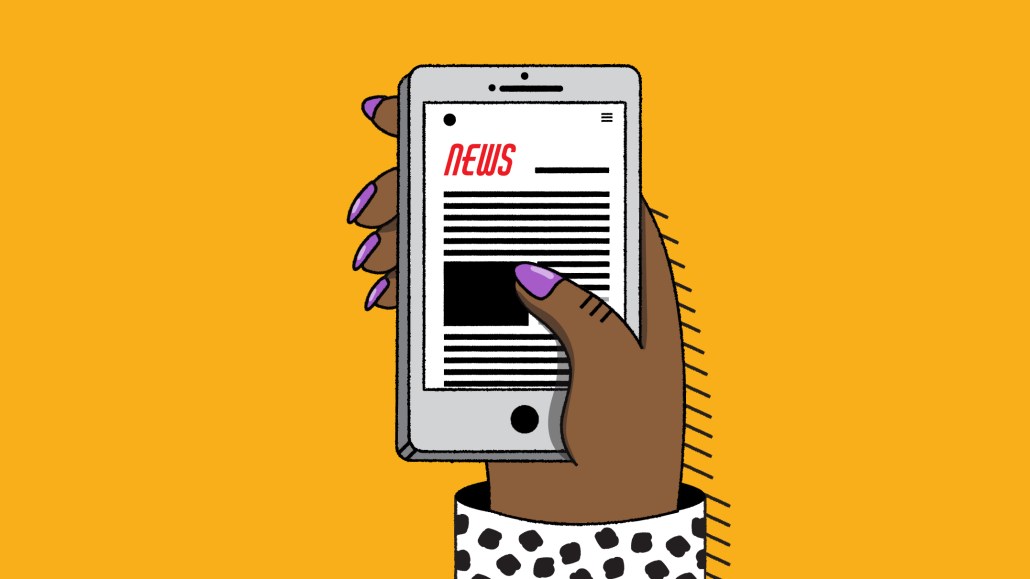Save 50% on a 3-month Digiday+ membership. Ends Dec 5.

This research is based on unique data collected from our proprietary audience of publisher, agency, brand and tech insiders. It’s available to Digiday+ members. More from the series →
It seems crazy now, but there was a time when publishers imagined they would one day publish most of their content natively on different social platforms, nurturing a symbiotic relationship between old and new media companies.
Things didn’t work out that way. Even as platform audiences continue to swell, their ad products mature and advertisers continue to pour money into them, publishers today consider most platforms neither a valuable source of revenue nor an important channel for brand-building, new Digiday Research reveals.
Outside of Facebook, which half of the publishers said was valuable for driving revenue, no other platform was described that way by more than a third of the publishers that post content to them; exactly 33% of the publishers that post content to YouTube described it as at least a “valuable” source of revenue.
“It doesn’t make sense to focus on those platforms versus getting someone onto your site,” said the head of audience development at one large digital publisher, who asked not to be identified while discussing business partners. “When you’re talking about getting 30 to 50 cents on the dollar from a YouTube or a Twitter Amplify, it’s not as valuable as on-platform.”
The social platform described as valuable for revenue by the fourth-highest share was Snapchat, but according to our survey results, a non-representative number of publishers use the platform; just 20 survey respondents said they publish content on Snapchat.
The brand-building side does not offer a much sunnier picture. Outside of Instagram, which was described as useful for brand-building by nearly two-thirds of the publishers that use it, every other platform had, at best, half of its users call it valuable for branding.
(Twitch proved an exception to this rule, with two-thirds of the publishers that use it saying it was valuable for brand-building, but only six survey respondents said they use Twitch.)
Those numbers themselves may even be inflated by the notoriously nebulous metrics many use to define branding. “I think brand is a fuzzy concept to begin with,” said Meena Thiruvengandam, the former global head of audience development at Bloomberg and a current media consultant. “Some publishers define ‘brand-building’ as ‘anything that’s not a revenue generator.’”
Thiruvengandam noted that, several years ago, it was not uncommon for publishers to approach every new platform that appeared with an open mind and a willingness to look past pretty basic questions. Those days are over. “It’s harder to get executives to allocate significant budgets to experiment,” Thiruvengandam said. “You’ve got to have proof that there’s something there.”
That newfound skepticism may explain why many of the emerging platforms Digiday asked about in this survey did not gather representative numbers of responses. Just nine respondents said they had experimented with Clubhouse; six had tried Twitch.
It likely also contributes to the recent trend of publishers looking to automate and syndicate as much of their social content distribution as possible. Publishers such as the Globe and Mail, for example, have fully automated their Facebook posting operations, and many publishers run their Twitter posting operations on quasi auto-pilot, relying heavily on automated post-scheduling software.
“We don’t really hear social as part of the conversation [anymore],” said Marshall Simmonds, founder of audience development consultancy Define Media Group. “It used to be the real shiny object for a while…now, it’s a box you have to tick.”
Publishers say they feel that, to some extent, the growing indifference is mutual. “The hustle from the partner side is not where it used to be,” the audience development head said, who observed that the platforms seemed to have moved on to creators, who are more plentiful, more dependent on the platforms for revenue and thus easier to control. “You think about the days of the Twitter Mirror and Instagram literally building photo booths at events, they’re not doing that anymore.”
Ad position: web_incontent_pos1
In late May, Digiday surveyed over 300 professionals in media and marketing about social platforms and the role they play in respondents’ businesses. 107 publisher-side respondents completed our survey, and they work at a wide variety of places; about one-third work at publishers with annual revenues over $50 million, and another third work at publishers with annual revenues under $10 million.
More in Media

What publishers are wishing for this holiday season: End AI scraping and determine AI-powered audience value
Publishers want a fair, structured, regulated AI environment and they also want to define what the next decade of audience metrics looks like.

Digiday+ Research Subscription Index 2025: Subscription strategies from Bloomberg, The New York Times, Vox and others
Digiday’s third annual Subscription Index examines and measures publishers’ subscription strategies to identify common approaches and key tactics among Bloomberg, The New York Times, Vox and others.

From lawsuits to lobbying: How publishers are fighting AI
We may be closing out 2025, but publishers aren’t retreating from the battle of AI search — some are escalating it, and they expect the fight to stretch deep into 2026.
Ad position: web_bfu



